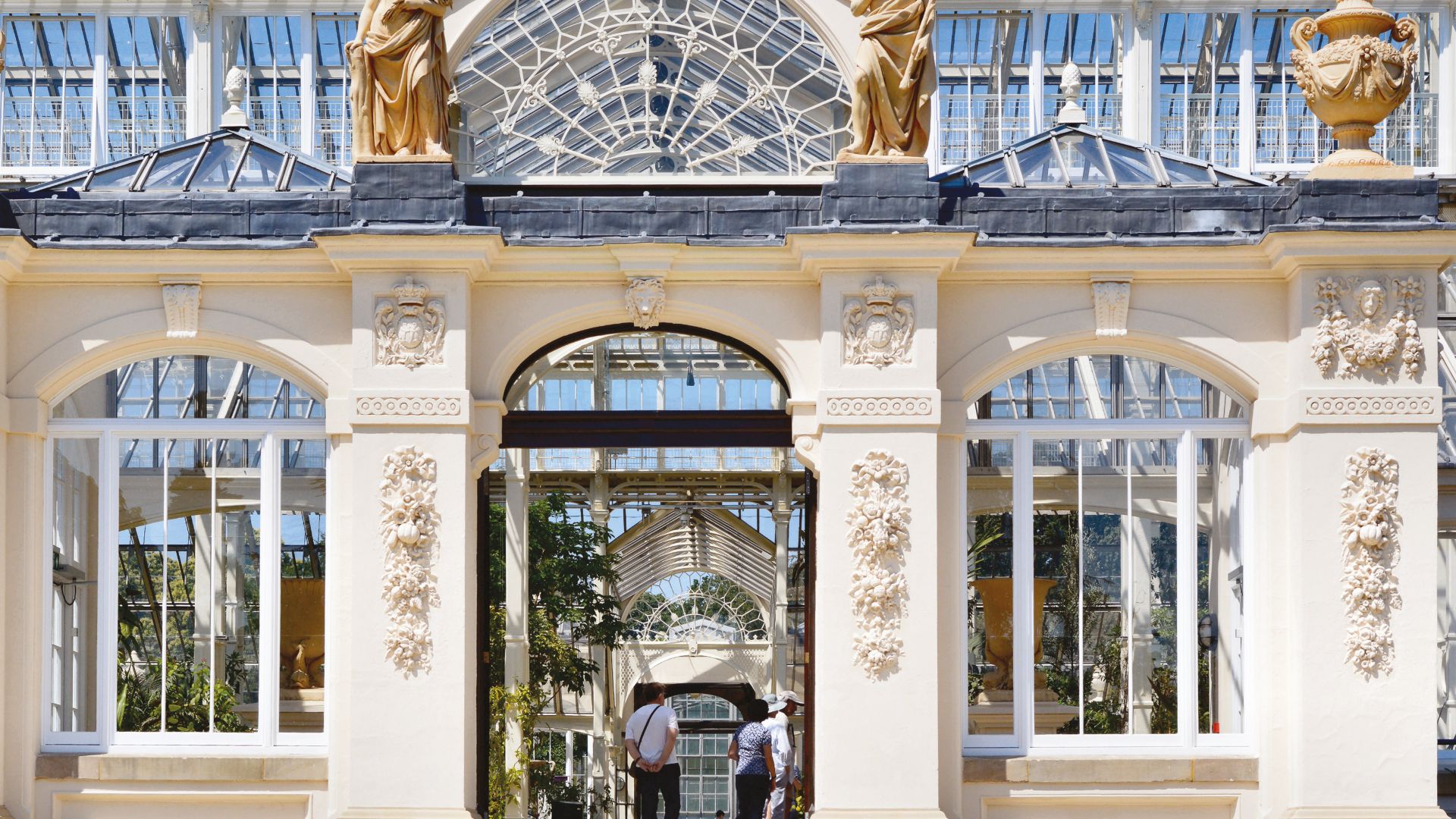2015
Kew Gardens, Richmond upon Thames.
A bespoke solution from Parex has contributed towards a major project to restore and revitalise “the World’s Greatest Glasshouse” at the Royal Botanic Gardens, Kew.
The stunning Temperate House is the largest Victorian glasshouse in the world, and home to some of the world’s rarest and most threatened plants.
The Grade 1 listed glass house, originally completed in 1863, is now open again following a colossal restoration programme spanning almost five years.
Although largely focussed on the restoration of the main glasshouse structure, the programme also featured extensive repairs to the supporting masonry including its rendered sections.
Parex helped to devise a bespoke solution for main contractor ISG Ltd, with remedial and application work carried out by London-based Stoneguard Projects Limited. The project was further complicated as the existing ironwork that was buried in the render repairs, required a cathodic protection system to be installed which could not be affected by the render system. A range of specialist lime materials from the Parex Parlumiere range were specified for their ability to blend and complement the original rendered surfaces of the walls, pillars and feature mouldings of the original building.
A specific repair solution was devised for the columns of the glasshouse where substantial erosion to the steel and brick core had occurred over the years. The loose existing render of the columns was removed and once the cathodic protection system was installed, the substrate was then treated with a priming/suction control coat of Parex Fixopierre, a base regulator coat of Parex Parlumiere Clair lime render, mixed with the Fixopierre, to a slurry consistency, which was then brush applied to create a bonding coat to the damaged areas.
Parex Parlumiere Clair render was then built up in layers to match the original render system of between 15-25mm to form a void-filling base coat which was reinforced in vulnerable zones by the addition of Parex TV10 mesh. Once cured, the repaired areas received a top coat of Parex Parlumiere Fin fine hydraulic lime render, again with Parex TV10 mesh embedded to provide additional strength, with additional layers added at various stress points.
To the larger brick areas that had been affected by moisture, a thinner repair proposal was required, and this was achieved using the Fixopierre priming/suction control coat, followed by a base regulator coat of Parex Parlumiere STH due to its damp resistant properties, again mixed with Parex Fixopierre to create a slurry bonding coat and this was then coated with the Parex Maite reinforced with Parex 355 AVU mesh.
Parex Paraguard breathable water-resistant coating was applied to protect the repaired structure from the weather and to help combat staining by environmental and airborne contaminants.
To compliment the repairs, Parex specialist repair mortars Mortier Pierre TF/DM were used to treat damaged areas of stonework and to reinstate the decorative features to match the original designs. The Parex Mortier Pierre TF was used for areas of soft to firm stonework and the Parex Mortier Pierre DM was used for the firm-to-hard stonework.
Other areas requiring attention included newly created apron vents where Parex Mortier Pierre TM was used to create new surrounds, while Parex Parthena Moulage casting mortar was used to recreate window heads and other decorative features deemed to be beyond repair by compacting the material into moulds to create exact replicas of the originals.
The Temperate House houses an internationally important collection of temperate zone plants, including some of the rarest and most threatened species. It was designed by Decimus Burton, who also designed the Palm House at Kew. Building began in 1860 and it opened to the public in 1863.
The restoration of the building was lengthy and complex and included:
• 69,000 individual elements removed from the building were cleaned, repaired or replaced
• 15,000 panes of glass replaced
• 180km of scaffolding required, equivalent to the length of the M25
• 5,280 litres of paint used, enough to cover four football pitches
• Tent structure enclosing building was large enough to cover three Boeing 747s
The project was supported by the Heritage Lottery Fund, Defra, Eddie and Sue Davies, The Garfield Weston Foundation, The Wolfson Foundation, The Linbury Trust, The Hartnett Conservation Trust, and others.
Client: Board of Trustees of the Royal Botanic Gardens, Kew
Main Contractor: ISG Ltd.
Architect: Donald Insall Associates
Render and Stone Repair: Stoneguard Projects Limited, Wembley.
PAREX PRODUCTS USED
Bonding/sealer coats: Parex Fixopierre/Parex Parlumiere Clair, Parex Fixopierre/Parex Parlumiere STH
Base Coat Renders: Parex Parlumiere Clair, Parex Parlumiere STH, Parex Maite
Top Coat Render: Parex Parlumiere Fin
Reinforcement: Parex TV10 mesh, Parex 355 AVU mesh
Repair Mortars: Parex Mortier TF, Parex Mortier DM
Casting Mortar: Parex Parthena Moulage
Protection: Parex Paraguard

